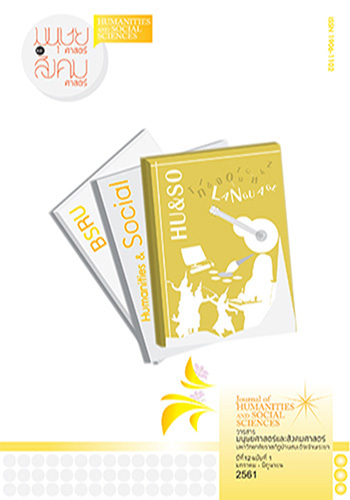The Study of Applying the 12 Virtues for Life Development Focusing on Morality, Ethics and Gratitude : A Case Study of Folk Tales in Sisaket Province
Keywords:
Folk Tales, Morality, Ethics, Moral Lifestyle 12 VirtuesAbstract
The Study of Applying the 12 Virtues for Life Development Focusing on Morality, Ethics and Gratitude: A Case Study of Folk Tales in Sisaket Province aimed to analyse the folk tales in the aspects of styles of presentation and values of folk tales, and to study the value, strategies for nurturing children in gratitude. It also maintained and distributed the 4 tribes’ folk tales in Sisaket province by using the 12 values with regard to Monogenesis theory. It found that the 40 folk tales from 4 tribes were not consistent to the Monogenesis theory which was used as the framework of the study. In fact, the results revealed that there were a few folk tales coming from the same origin. In other words, all of them came from different sources and origins. However, there were some from the similar origin that was the folk tales from Baan Nong Koo village, which was the Laotian tribe because they were our close neighbour country. The rest had the totally different styles of story-telling. In the aspect of the style of presentation, it found that all of the 40 folk tales had different story-telling and narration. However, all of them had the same goal, which is focusing on morality, ethics and gratitude. In the aspect of the 12 values, it could be found in the 40 folk tales, but they taught in different ways on morality, ethics and gratitude. However, they were still consistent to the 12 values that the government is focusing on although there was some inequality when compared with the reality. In the aspect of maintaining and distributing the 4 tribes’ folk tales in Sisaket province, it was still the beginning of data collection and distribution in the future. The number of 40 tales from the four tribes in 4 village in Sisaket province is the precious heritage of all Thai people, particularly for the Northeast people, to maintain them for good because they are the important sources that reflect the local lifestyles of the Northeast people in the past.
References
กนกรัตน์ ตั้งสุขเกษมสันต์. (2552). การผลิตหนังสือนิทานพื้นบ้านเพื่อปลูกฝังคุณธรรมจริยธรรมสำหรับเด็กด้อยโอกาส จังหวัดขอนแก่น. วิทยานิพนธ์ปริญญาดุษฎีบัณฑิต มหาวิทยาลัยมหาสารคาม.
กุหลาบ มัลลิกะมาส. (2518). คติชาวบ้าน. กรุงเทพฯ : มหาวิทยาลัยรามคำแหง.
จารุบุตร เรืองสุวรรณ. (2520). วรรณกรรมพื้นบ้านภาคอีสาน. ม.ป.ท. : ม.ป.พ.
เจือ สตะเวทิน. (2517). คติชาวบ้าน. กรุงเทพฯ : สุทธิสารการพิมพ์.
ธวัช ปุณโณทก. (2543). วิเคราะห์วรรณกรรมท้องถิ่นเชิงเปรียบเทียบ. (พิมพ์ครั้งที่ 2). กรุงเทพฯ : มหาวิทยาลัยรามคำแหง.
ประมวล พิมพ์เสน. (2547). นิทานพื้นบ้านอีสาน 2. ขอนแก่น : ศูนย์การถ่ายทอดภูมิปัญญาไทยภาคตะวันออกเฉียงเหนือ จังหวัดขอนแก่น.
ประยูร ทรงศิลป์. (2542). การศึกษาวิเคราะห์ตำนานและนิทานพื้นบ้านเขมรภาคที่ 1-9 ว่าด้วยเรื่องนิทานพื้นบ้าน. กรุงเทพฯ : ภาควิชาภาษาไทย คณะมนุษยศาสตร์และสังคมศาสตร์ สถาบันราชภัฏธนบุรี.
เรไร ไพรวรรณ์. (ม.ป.ป.). ว่าด้วยเรื่องนิทานพื้นบ้าน. ค้นเมื่อวันที่ 26 สิงหาคม 2558. จาก http://www.thaifolk.com/Doc/literate/tales/importance.htm
สุจิตต์ วงษ์เทศ. (2546). ประวัติศาสตร์สังคม-วัฒนธรรมของภาษาและวรรณคดีในสยามประเทศ. กรุงเทพฯ : มติชน.
Downloads
Published
How to Cite
Issue
Section
License

This work is licensed under a Creative Commons Attribution-NonCommercial-NoDerivatives 4.0 International License.



